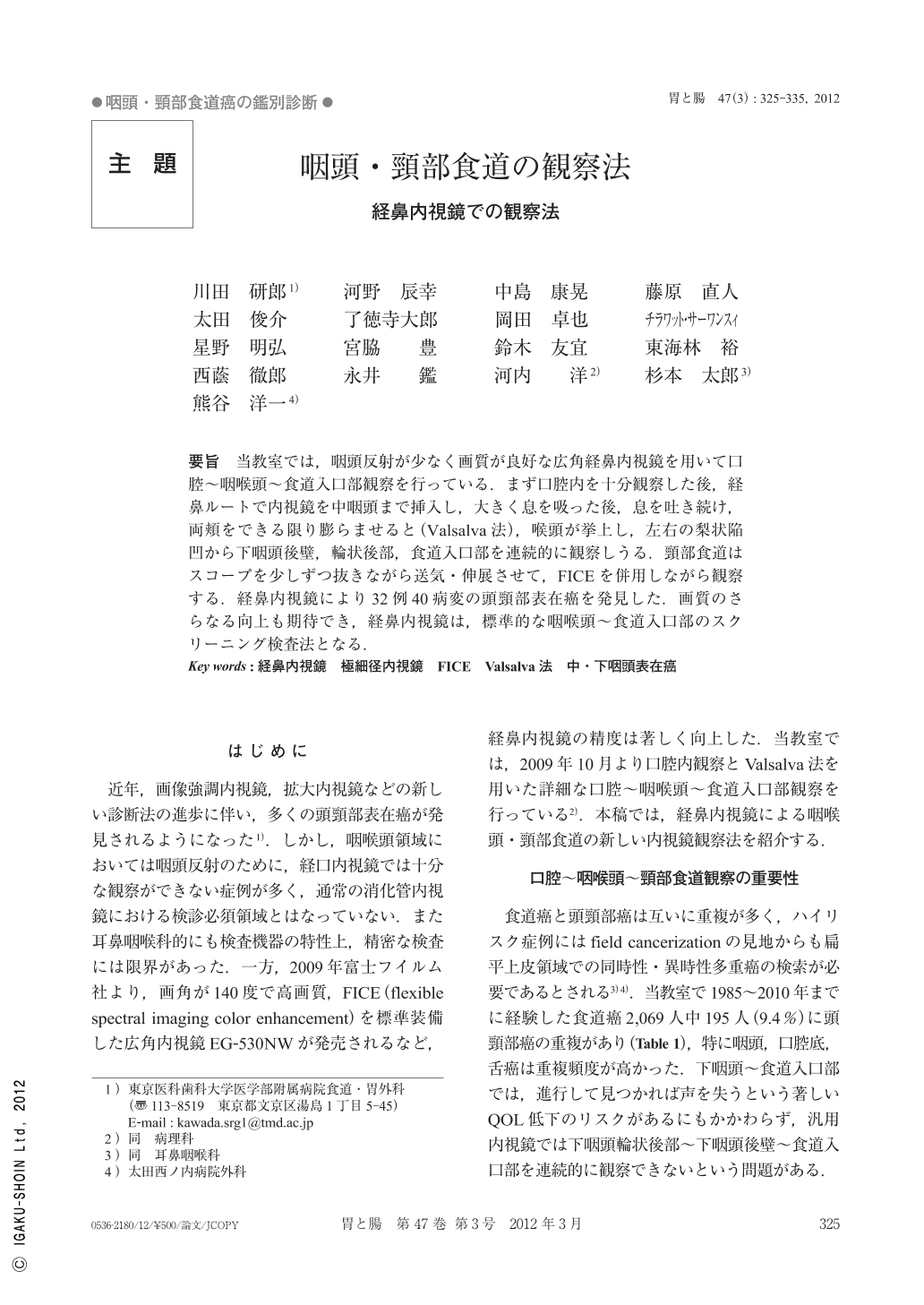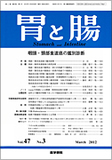Japanese
English
- 有料閲覧
- Abstract 文献概要
- 1ページ目 Look Inside
- 参考文献 Reference
要旨 当教室では,咽頭反射が少なく画質が良好な広角経鼻内視鏡を用いて口腔~咽喉頭~食道入口部観察を行っている.まず口腔内を十分観察した後,経鼻ルートで内視鏡を中咽頭まで挿入し,大きく息を吸った後,息を吐き続け,両頬をできる限り膨らませると(Valsalva法),喉頭が挙上し,左右の梨状陥凹から下咽頭後壁,輪状後部,食道入口部を連続的に観察しうる.頸部食道はスコープを少しずつ抜きながら送気・伸展させて,FICEを併用しながら観察する.経鼻内視鏡により32例40病変の頭頸部表在癌を発見した.画質のさらなる向上も期待でき,経鼻内視鏡は,標準的な咽喉頭~食道入口部のスクリーニング検査法となる.
We were able to observe the oral cavity, the larynx, the pharynx, and the top of the esophagus using transnasal EGD(esophagogastroduodenoscopy)which can provide high quality image solution with a lower incidence of gag reflex. The patient was placed in the left decubitus position, where the neck protrudes forward, and the chin is extended in the‘sniffing the morning air'position. After the endoscope is inserted through the mouth, the oral cavity is observed. Next, the endoscope is passed through the nose with no sedation, and the laryngopharynx is observed. The tip of the endoscope is positioned above the inlet of the larynx, then the patient is asked to blow hard and puff the cheeks with mouth closed(the modified Valsalva maneuver). During the ballooning of the pyriform fossae, the endoscope is inserted in front of the upper esophageal sphincter, and the postcricoid region and the posterior of the hypopharynx are continuously observed. The endoscope is then passed into the cervical esophagus. The FICE(flexible spectral imaging color enhancement)system enables us to easily observe the presence of scattered brown dots to diagnose superficial cancers. We have been able to detect 40 lesions in 32 cases of squamous cell carcinoma of the head and neck. More advances in endoscopy are expected, and transnasal EGD may become a standard tool for the screening of the larynx, pharynx, and the orifice of the esophagus for cancer.

Copyright © 2012, Igaku-Shoin Ltd. All rights reserved.


